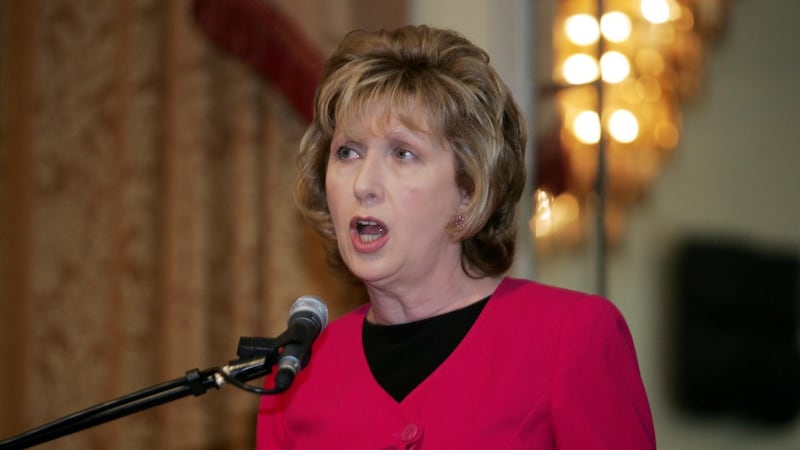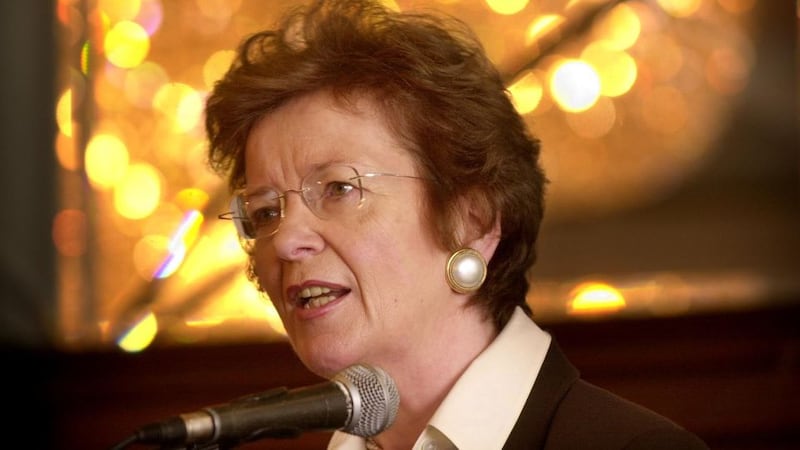It began on a chat show – of course it did – with a black presidential aspirant calling for “an honest and open dialogue” about immigration. If that seemed a tad counter-intuitive, you had not been keeping up with the many lives of Kevin Sharkey. Quick Google. “Ireland first. It’s my principle, but it should be a law,” he told the Sun a couple of years ago. A nation gulped. Was that a serious pitch for the presidency ?
Then stuff got weird and Sharkey’s wasn’t even the weirdest.
But this stuff was always weird.
The race for the Áras turns on individual traits, tics and personalities. This is why previous soft television exposure is a priceless boost. For some viewers, the imprimatur of television (especially of the faux-master of the universe variety) implies some mystical expertise, Solomon-style authority and Croesus-like money-making talents, not only providing invaluable feedback to the aspirant candidate but feeding the requisite narcissism.
As the race gallops along it will expose the odd big little lie, some creative accounting, a sudden shyness about the promised total transparency; heroic histories are dissected, embarrassments, naivety and neediness go on full display. Enter that other viewer type, the one that “knew that self-important f***er when he hadn’t an arse in his trousers”. All of it, meanwhile, heavily compounded by political dark arts, malice aforethought and “leaks”.
It's remarkable now to look back and see how Mary McAleese and Mary Robinson, both only 46 at inauguration, were said to have 'come from nowhere'
It might be argued that all this only proves that the system works. The dissimulators, the self-deluded and the fantasists are weeded out and left sobbing in a muddy ditch. For two years after the 1997 campaign carnage – when she started out as favourite – Adi Roche, an idealistic, energetic environmentalist, felt unable to walk down her native city’s main street. “I was drowning inside. It destroyed me.”
Dirty-tricks campaign
It’s true that some who witnessed Roche’s head bobbing along to a Luka Bloom song at an early campaign event predicted certain, messy defeat. A few former staff members helped by kindly reviewing her management style as “Stalinist”. But at a far more serious level came the foul dirty-tricks campaign claiming – wrongly – that her brother had been dismissed 20 years earlier from the Army for involvement in a republican terrorist group.
In presidential campaigns, candidates get eviscerated; so do families. That’s weird stuff. And not so entertaining.
To understand the import of that smear on the Roche family, it’s important to understand the febrile atmosphere of that time. The Northern Ireland peace process was balanced on a pinhead. To be perceived as a Sinn Féin supporter was politically explosive. Mid- campaign, deeply sensitive Irish government documents were leaked drip-drip over several weeks and the discreet role of the Belfast-born, Fianna Fáil presidential nominee as a member of the Redemptorist peace mission was revealed and spun to paint her as a Sinn Féin supporter. The nominee was Mary McAleese.

An Irish News cartoon depicted her being cross-examined by a posse of critics in the Republic: “Ms McAleese, are you now or were you ever guilty of being a nationalist?” She was called a “tribal time bomb” by a commentator on RTÉ, and “Rome rule wrapped in a green flag” by a Northern unionist. Feminists were deeply wary of her Rome-rule tendencies. She had campaigned against divorce and publicly advocated for the Eighth Amendment. On the campaign trail, the tension between her and the media was often palpable.
That is why you choose a person of a particular calibre with a certain background of making wise judgments, with a certain degree of skills in making these judgments
When she stood before spellbound audiences in Killarney or Galway and talked endlessly about bridge-building, it’s fair to say there was some sniggering down the back. Yet as we know now, she took serious risks during her presidency, inviting an intriguing spectrum of Northern loyalists and others to dine with her and her husband in the Áras, including some who had never set foot in the Republic or in any official setting outside of a prison.
Leeway
The proof is in that iconic bridge in the Boyne valley named in her honour. As for the deep-dyed Catholic orthodoxy, this year she voted to repeal the Eighth Amendment “with a heart and a half”. Who would have predicted any of this 21 years ago ? She got her chance – thanks, in fairness, to Bertie Ahern and a tanker of political skulduggery – and proved herself more than worthy. So shouldn’t we give the current line-up equal leeway?

Think again. It’s remarkable now to look back and see how Mary McAleese and Mary Robinson, both only 46 at inauguration (note well, all you “youthful” candidates) were said to have “come from nowhere”. Robinson’s constitutional expertise and courageous, ground-breaking legal advocacy were already well established. McAleese’s CV ran to seven dense pages of qualifications for the job. In campaign interviews, they both talked fluently and authoritatively about the nature of the boundaries around the presidency. They knew precisely where the president’s constitutional obligations lay and where personal judgment might come into play.
During her campaign, McAleese noted, for example, that where the Council of State is consulted, it’s the president alone who must decide. “That is the lonely part of the office. That is where the buck stops. That is why you choose a person of a particular calibre with a certain background of making wise judgments, with a certain degree of skills in making these judgments.”
Have a closer look at those CVs doing the rounds, with the jargon and frankly mad notions of what the president can do. Me? I’d like a nice dogs’ home. No dog left behind. Vote me.











